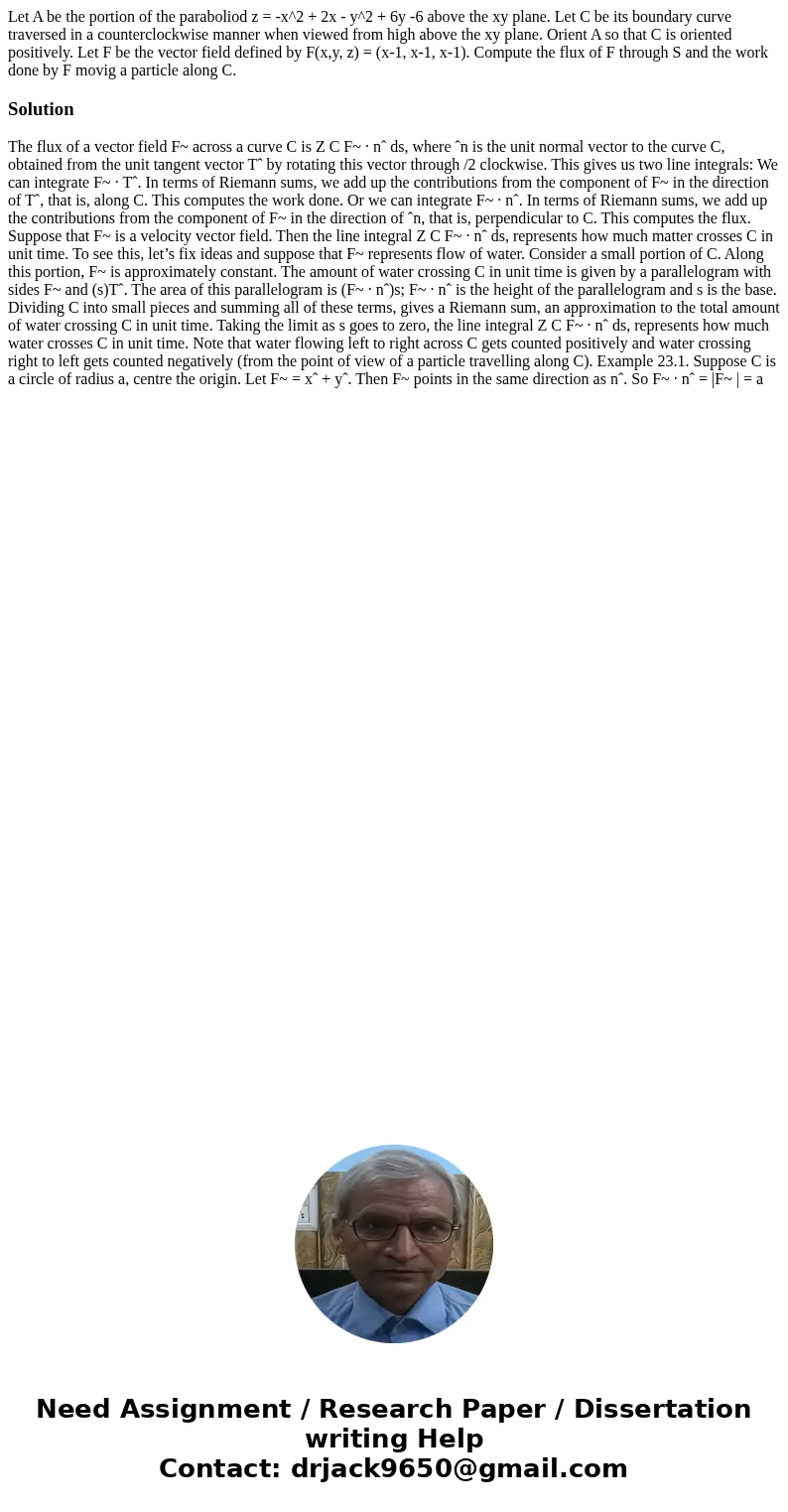Let A be the portion of the paraboliod z x2 2x y2 6y 6 a
Let A be the portion of the paraboliod z = -x^2 + 2x - y^2 + 6y -6 above the xy plane. Let C be its boundary curve traversed in a counterclockwise manner when viewed from high above the xy plane. Orient A so that C is oriented positively. Let F be the vector field defined by F(x,y, z) = (x-1, x-1, x-1). Compute the flux of F through S and the work done by F movig a particle along C.
Solution
The flux of a vector field F~ across a curve C is Z C F~ · nˆ ds, where ˆn is the unit normal vector to the curve C, obtained from the unit tangent vector Tˆ by rotating this vector through /2 clockwise. This gives us two line integrals: We can integrate F~ · Tˆ. In terms of Riemann sums, we add up the contributions from the component of F~ in the direction of Tˆ, that is, along C. This computes the work done. Or we can integrate F~ · nˆ. In terms of Riemann sums, we add up the contributions from the component of F~ in the direction of ˆn, that is, perpendicular to C. This computes the flux. Suppose that F~ is a velocity vector field. Then the line integral Z C F~ · nˆ ds, represents how much matter crosses C in unit time. To see this, let’s fix ideas and suppose that F~ represents flow of water. Consider a small portion of C. Along this portion, F~ is approximately constant. The amount of water crossing C in unit time is given by a parallelogram with sides F~ and (s)Tˆ. The area of this parallelogram is (F~ · nˆ)s; F~ · nˆ is the height of the parallelogram and s is the base. Dividing C into small pieces and summing all of these terms, gives a Riemann sum, an approximation to the total amount of water crossing C in unit time. Taking the limit as s goes to zero, the line integral Z C F~ · nˆ ds, represents how much water crosses C in unit time. Note that water flowing left to right across C gets counted positively and water crossing right to left gets counted negatively (from the point of view of a particle travelling along C). Example 23.1. Suppose C is a circle of radius a, centre the origin. Let F~ = xˆ + yˆ. Then F~ points in the same direction as nˆ. So F~ · nˆ = |F~ | = a

 Homework Sourse
Homework Sourse